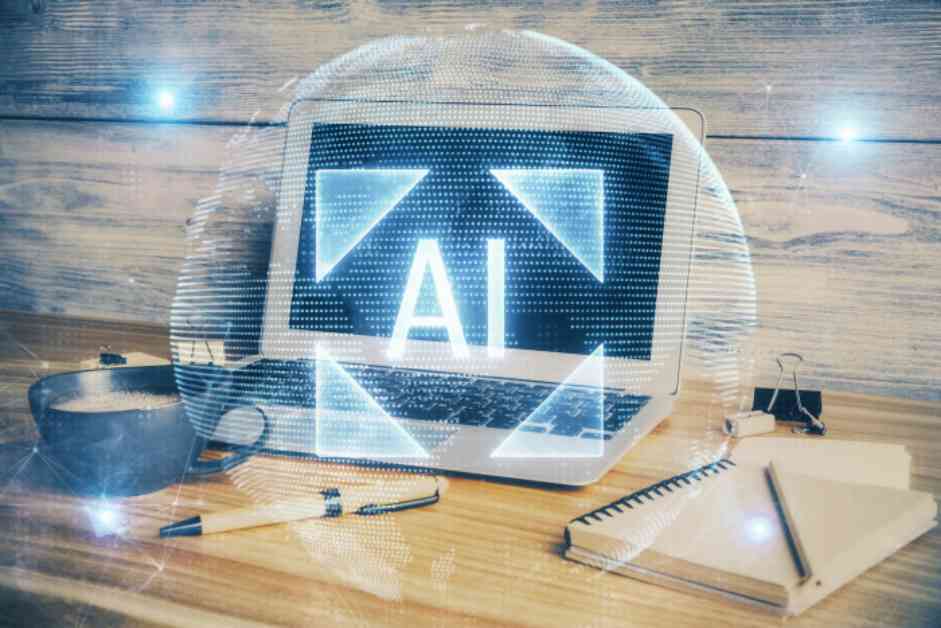Italy is taking steps to bridge the digital skills gap with other European Union countries by implementing artificial intelligence in its schools. The government has launched a pilot program to test AI-assisted teaching in 15 classrooms across four regions, with the potential for expansion in the future if successful.
Education Minister Giuseppe Valditara announced the introduction of AI tools on classroom tablets and computers, which will serve as virtual assistants to facilitate learning for students and help teachers tailor their teaching methods to individual students. This move comes as Italy seeks to improve its standing in basic digital skills, as currently, it ranks lower than many other EU members, including Latvia, Poland, Bulgaria, and Romania.
While specific details about the initiative have not been disclosed, the trial is seen as promising by experts in the education sector. Francesca Bastagli, head of research at the Fondazione Agnelli educational think tank, expressed optimism that the pilot program will provide valuable insights into the effectiveness and inclusivity of AI tools in schools.
The push for AI integration in schools aligns with Prime Minister Giorgia Meloni’s agenda, who also recently imposed a ban on the use of mobile phones in classrooms. Past efforts to digitize Italian schools have faced challenges, particularly during the COVID-19 pandemic, due in part to the older age demographic of teaching staff, with over half of them aged 50 or older, according to OECD data.
Italy’s focus on AI in education was further highlighted during this year’s G7 summit, where leaders pledged to enhance collaboration in harnessing the benefits of AI while managing the associated risks.
Benefits of AI-assisted Teaching
The introduction of AI in Italian schools holds the potential to revolutionize the education system by providing personalized learning experiences for students. With AI-powered tools, teachers can gain valuable insights into each student’s learning style, preferences, and areas of improvement, allowing for more targeted and effective instruction.
Moreover, AI-assisted teaching can help bridge the gap between students with varying levels of proficiency by offering tailored support to those who may require additional assistance. This personalized approach ensures that no student is left behind, ultimately leading to improved academic outcomes and a more inclusive learning environment.
Additionally, AI technology can offer interactive and engaging learning experiences through virtual simulations, educational games, and real-time feedback mechanisms. By incorporating these innovative teaching methods, educators can enhance student engagement, motivation, and retention of knowledge, making learning more enjoyable and effective.
Challenges and Considerations
Despite the promising prospects of AI-assisted teaching, there are challenges and considerations that need to be addressed to ensure its successful implementation in Italian schools. One of the key concerns is the potential for biases in AI algorithms, which could inadvertently perpetuate existing inequalities in education.
To mitigate this risk, it is essential to prioritize diversity, equity, and inclusion in the development and deployment of AI tools in education. This includes ensuring that algorithms are transparent, accountable, and regularly audited to prevent discriminatory outcomes and promote fair access to learning opportunities for all students.
Furthermore, the training and upskilling of teachers are crucial to effectively integrate AI technology into the classroom. Educators need to be equipped with the necessary knowledge, skills, and support to leverage AI tools effectively and maximize their potential in enhancing student learning outcomes.
Future Implications and Recommendations
As Italy embarks on its pilot program to test AI-assisted teaching in schools, the outcomes and lessons learned will have far-reaching implications for the future of education in the country. If successful, the integration of AI technology could pave the way for a more adaptive, personalized, and inclusive education system that meets the diverse needs of students.
To ensure the sustainable adoption of AI in education, policymakers, educators, and technology developers must collaborate to establish clear guidelines, ethical standards, and best practices for the responsible use of AI tools in schools. This includes prioritizing data privacy, security, and transparency to safeguard student information and maintain trust in the education system.
In conclusion, the introduction of AI-assisted teaching in Italian schools represents a significant step towards closing the digital skills gap and fostering innovation in education. By harnessing the power of AI technology, Italy has the opportunity to transform its education system and empower students with the knowledge, skills, and competencies needed to thrive in the digital age.




















